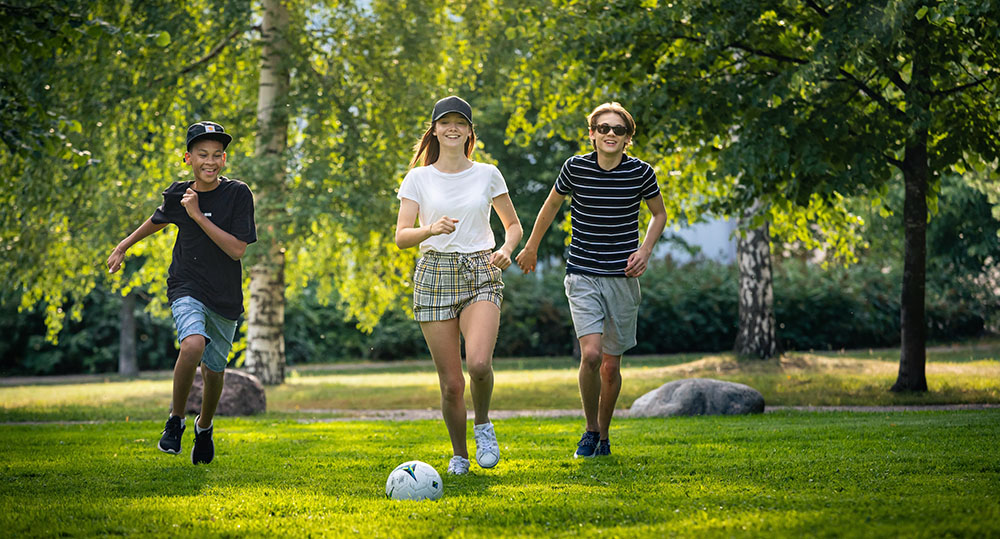Shade in outdoor areas provides effective protection from UV radiation

Promoting sun protection is part of promoting the well-being and health of citizens and society as a whole. An easy way to promote sun protection is to add shade to outdoor recreation areas.
Shade can reduce UV radiation by up to half compared to direct sun exposure. The less sky is visible from under the shade, the better the shade. Shade can be created with trees, shrubs, canopies and sun sails or parasols. Shades also provide protection from the heat on hot days. It is also important to consider the reflection of UV radiation from surrounding surfaces to ensure that the shade provides maximum protection.
Read more about UV radiation and the UV index (stuk.fi)
Where shade is needed
It is important to increase the number of shaded areas in kindergarten and school yards as well as sports, leisure and other outdoor facilities run by municipalities or private operators. Shade is particularly important in the yards of kindergartens and schools, where children and young people spend a lot of time outdoors. Playgrounds, local sports facilities, sports fields and beaches should also provide the possibility to take cover from the day's strongest UV rays. It is also worth considering the outdoor areas favoured by senior citizens, as older people also need protection from UV radiation and heat.
It is recommended that all outdoor spaces should provide shade (sheltering vegetation or built-in shade such as a canopy or indoor space). Shaded areas reduce the adverse effects of heat and allow for safe outdoor exercise and sports even on hot summer days.
Creating shade
Shade creation is an important consideration when designing and building new outdoor areas, but it is also easy to improve existing outdoor areas with lighter shade structures. Both natural and constructed shade can be used to provide shade. Consider the direction of sunlight when designing outdoor spaces.
- Buildings, canopies, pavilions, sail covers, awnings and parasols provide protection from UV radiation, but also from heat and other weather phenomena. The less sky visible, i.e. the larger the diameter of the shade, the better the shade.
- The fabric of a parasol, awning or pavilion should be tightly woven. The UPF rating indicates how well the fabric protects against UV radiation.
- Less reflective surface materials reduce the reflection of UV radiation. For example, grass reflects less UV radiation than asphalt or sand.
- Take advantage of trees and shrubs for shelter. Vegetation in yard area has also been shown to have other health benefits.
Even if shade is available in the yard, additional sun protection should be encouraged. Shade does not protect against all UV radiation.
Read more about how to protect yourself from the sun (stuk.fi)
Nordic statement
In 2017, STUK, together with other Nordic radiation safety authorities, published a position paper to influence the provision of sufficient shade for children in outdoor play areas. In the position paper, the Nordic authorities call on municipalities, urban planners, and leisure and sports clubs to take into account the need for shade when designing and building outdoor spaces for children.
Nordic position paper: Outdoor environments for children must offer sun protected areas